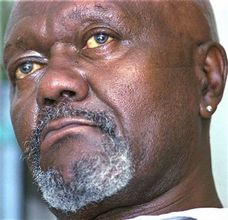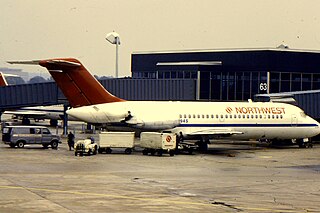
José Martí International Airport, sometimes known by its former name Rancho Boyeros Airport, is an international airport located 20 kilometres (12 mi) southwest of the centre of Havana, Cuba, and is a hub for Cubana de Aviación and Aerogaviota, and former Latin American hub for the Soviet airline Aeroflot. It is Cuba's main international airport, and serves several million passengers each year. The facility is operated by Empresa Cubana de Aeropuertos y Servicios Aeronáuticos (ECASA).

Western Airlines was a major airline in the United States based in California, operating in the Western United States including Alaska and Hawaii, and western Canada, as well as to New York City, Boston, Washington, D.C., and Miami and to Mexico City, London and Nassau. Western had hubs at Los Angeles International Airport, Salt Lake City International Airport, and the former Stapleton International Airport in Denver. Before it merged with Delta Air Lines in 1987 it was headquartered at Los Angeles International Airport (LAX). Throughout the company's history, its slogan was "Western Airlines...The Only Way to Fly!"
This is a list of aviation-related events from 1980.
Pacific Southwest Airlines (PSA) was a low-cost US airline headquartered in San Diego, California, that operated from 1949 to 1988. It was the first substantial scheduled discount airline. PSA called itself "The World's Friendliest Airline" and painted a smile on the nose of its airplanes, the PSA Grinningbirds. The Los Angeles Times called PSA "practically the unofficial flag carrier airline of California for almost forty years."
This is a list of aviation-related events from 1958.
This is a list of aviation-related events from 1961.
This is a list of aviation-related events from 1968.
This is a list of aviation-related events from 1969.
This is a list of aviation-related events from 1970.
This is a list of aviation-related events from 1972.
This is a list of aviation-related events from 1971.
National Airlines was a trunk carrier, a scheduled airline in the United States that operated from 1934 until it merged with Pan Am in 1980. For most of its existence the company was headquartered at Miami International Airport, Florida. At its height, National Airlines had a network of "Coast-to-Coast-to-Coast" flights, linking Florida and Gulf Coast destinations such as New Orleans and Houston with cities along the East Coast as far north as Boston as well as with large cities on the West Coast including Los Angeles, San Francisco and Seattle. From 1970 to 1978, National, Braniff International Airways, Pan American World Airways and Trans World Airlines (TWA) were the only U.S. airlines permitted to operate scheduled passenger flights to Europe.

William Lee "Bill" Brent was an American member of the Black Panther Party and defector, best known for hijacking a passenger jet and diverting it to Cuba in 1969, where he spent the last 37 years of his life in exile.

Pan Am Flight 281 was a regularly scheduled Pan American World Airways flight to San Juan, Puerto Rico. It was hijacked on November 24, 1968, by four men from JFK International Airport, New York City to Havana, Cuba. U.S. jet fighter aircraft followed the plane until it reached Cuban airspace.

The hijacking of Southern Airways Flight 49 started on November 10, 1972 in Birmingham, Alabama, stretching over 30 hours, three countries, and 4,000 miles (6,400 km), not ending until the next evening in Havana, Cuba. Three men, Melvin Cale, Louis Moore, and Henry D. Jackson Jr. successfully hijacked a Southern Airways Douglas DC-9 that was scheduled to fly from Memphis, Tennessee to Miami, Florida via Birmingham and Montgomery, Alabama and Orlando, Florida. The three were each facing criminal charges for unrelated incidents. Thirty-five people, including thirty-one passengers and four crew members, were aboard the airplane when it was hijacked. The hijackers' threat to crash the aircraft into a nuclear reactor led directly to the requirement that U.S. airline passengers be physically screened, beginning January 5, 1973.

The apparent success and instant notoriety of the hijacker known as D. B. Cooper in November 1971 resulted in over a dozen copycat hijackings within the next year all using a similar template to that established by Cooper. Like Cooper, the plan would be to hijack an aircraft, demand a ransom, and then parachute from that aircraft as a method of escape. To combat this wave of extortion hijackings, aircraft were fitted with eponymous "Cooper Vanes," specifically designed to prevent the aft staircase from being lowered in-flight. The Cooper Vane, as well as the widespread implementation of other safety measures such as the installation of metal detectors throughout American airports, would spell the end of the Cooper copycats.






